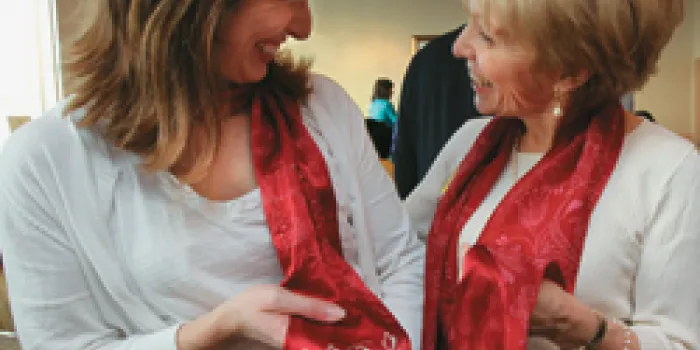Despite seeking treatment for her symptoms for years, Jill R. Birdwhistell, PhD, was never diagnosed with a bleeding disorder. Heavy menstrual periods lasting three weeks severely disrupted her education, career and day-to-day activities. Eventually she had a hysterectomy when she was 40 years old. “With that, my symptoms ended without ever getting a diagnosis,” Birdwhistell says.
Although Birdwhistell’s father had hemophilia A and died of hepatitis C contracted from a blood transfusion, it wasn’t until much later that his daughter made the connection between his hemophilia and her symptoms. After a conversation with the late Renée Paper, RN, who had von Willebrand disease (VWD), Birdwhistell realized she was likely a symptomatic carrier of factor VIII deficiency.
For the past 10 years, the National Hemophilia Foundation (NHF) has worked to increase awareness of women with bleeding disorders. In 2010, NHF launched the Victory for Women initiative to expand awareness, diagnosis and treatment of women with bleeding disorders. In June 2010, Birdwhistell, who is involved in developing the Victory for Women initiative, was elected to the NHF board of directors.
Increasing Healthcare Provider Awareness
Birdwhistell says more work is needed to ensure that the healthcare community understands that women can and do have bleeding disorders and that treatment can improve their quality of life.
While some people with bleeding disorders are diagnosed and treated early, many women today are neither diagnosed nor even recognize that their symptoms may be treatable, Birdwhistell says.
One goal of Victory for Women is educating primary care providers—physicians, nurses, nurse practitioners, physician assistants and ob/gyns—who women see on a regular basis. “Unless primary care providers are trained to recognize symptoms, they won’t be able to diagnose, treat or refer,” Birdwhistell says.
Victory for Women also seeks to reach out to young women who are symptomatic, but have not yet been diagnosed, as well as support women who have been diagnosed through support of chapter and HTC efforts. One project helping achieve greater awareness is the 2011 Victory for Women calendar, which features women with bleeding disorders. Birdwhistell appears in the calendar, photographed by well-known New York City nightlife photographer Patrick McMullan. His sister died from complications of a bleeding disorder in the 1970s. (See “Iron Butterfly,” HemAware Fall 2010, page 20.) “The calendar is a recognition of what women have been through and the quality of life that is possible if people are given effective treatment,” Birdwhistell says.
Birdwhistell acknowledges the progress that has been made on the medical side of this issue. However, she knows it will take a lot more effort before the bleeding disorders community can achieve the widespread awareness it anticipates.
“The goal is to get providers educated about this so they can start taking their patients’ complaints seriously and make referrals to hematologists for work-ups and treatment,” says Birdwhistell. She also wants to encourage women to start talking about their symptoms and recognize that bleeding disorders are treatable. “Having a bleeding disorder does not have to make life miserable,” she says.

